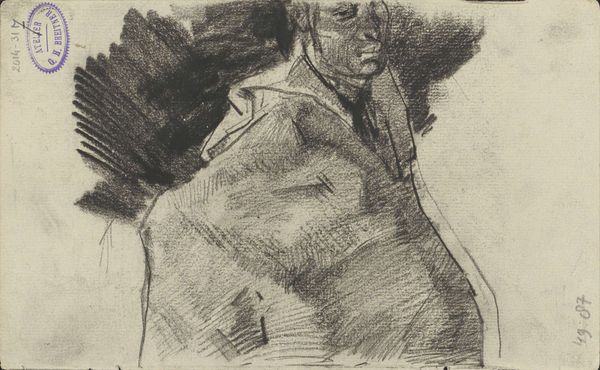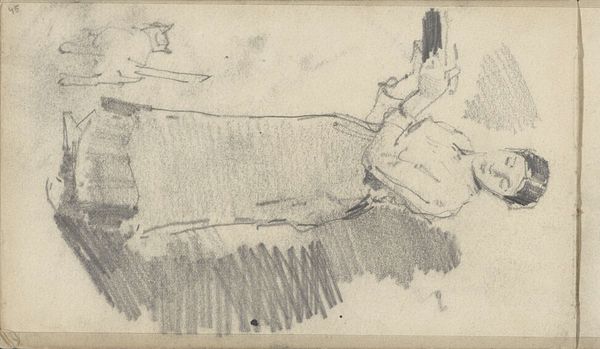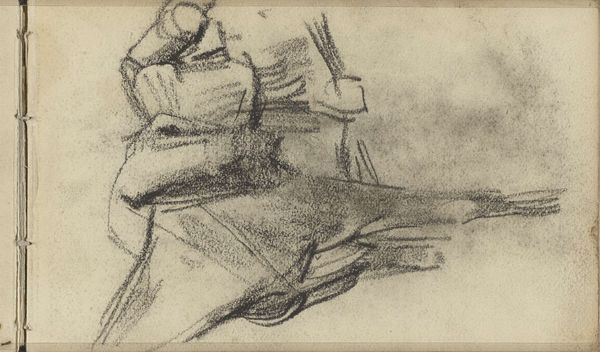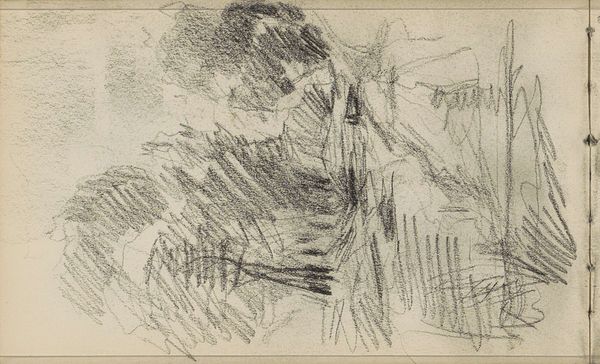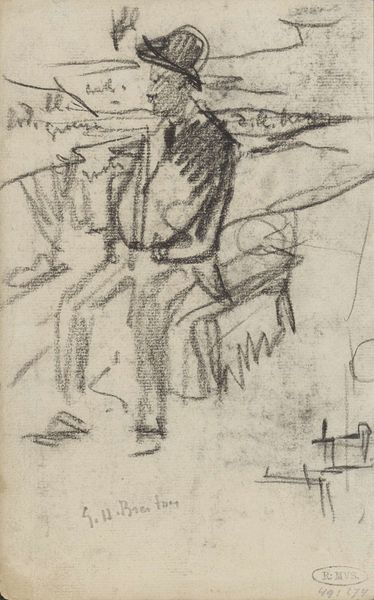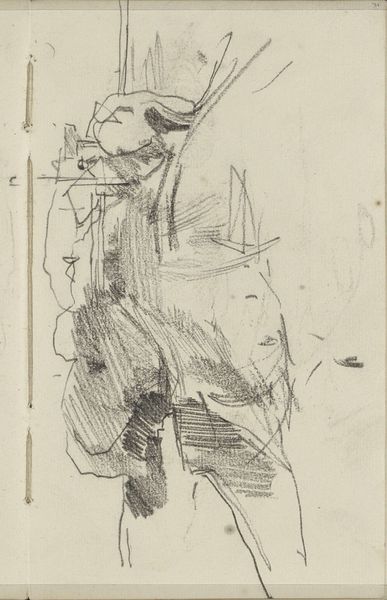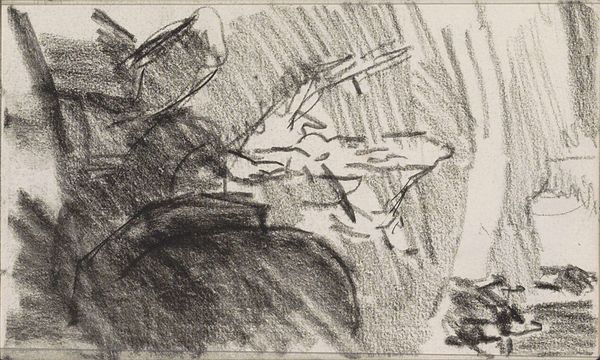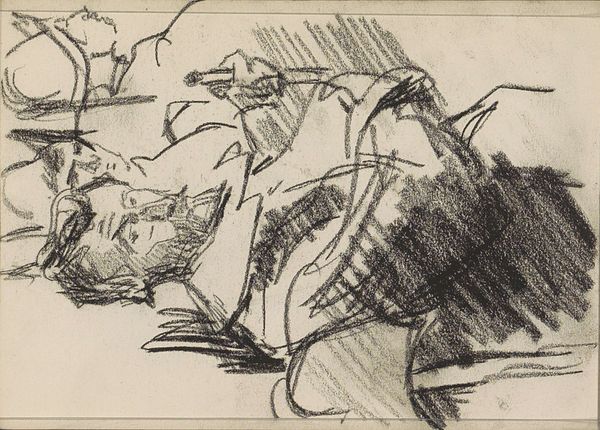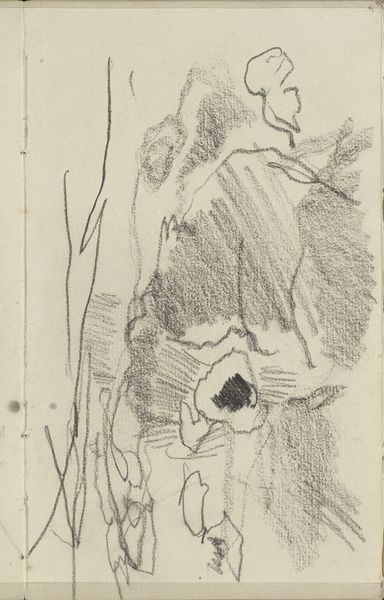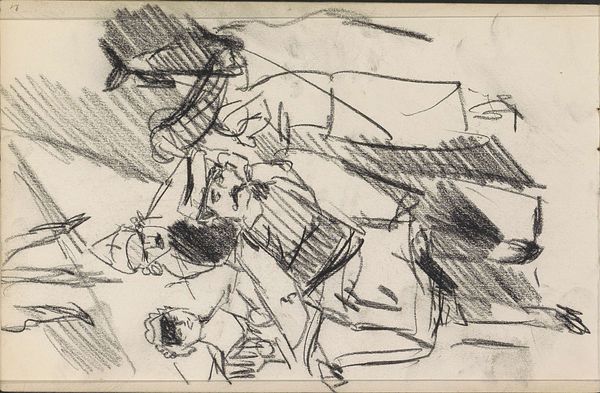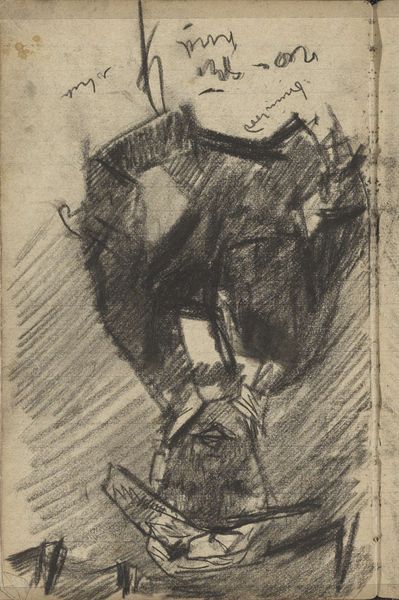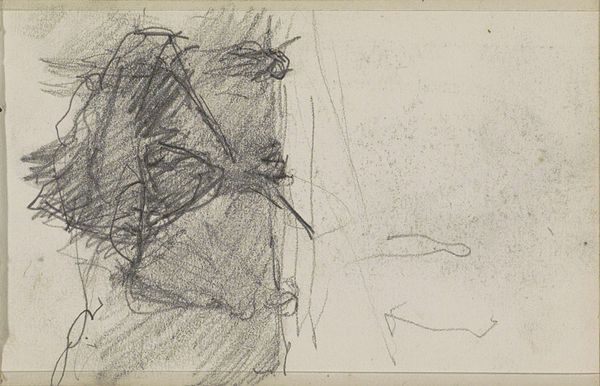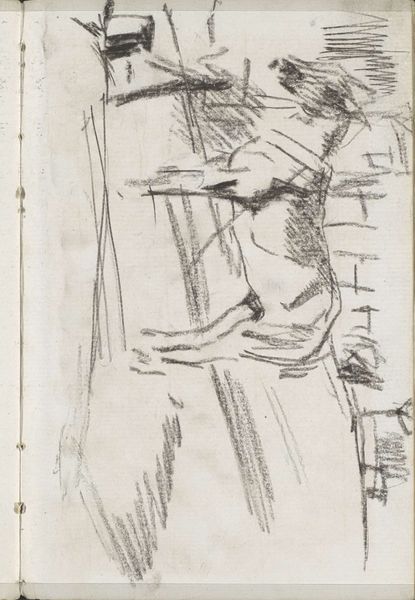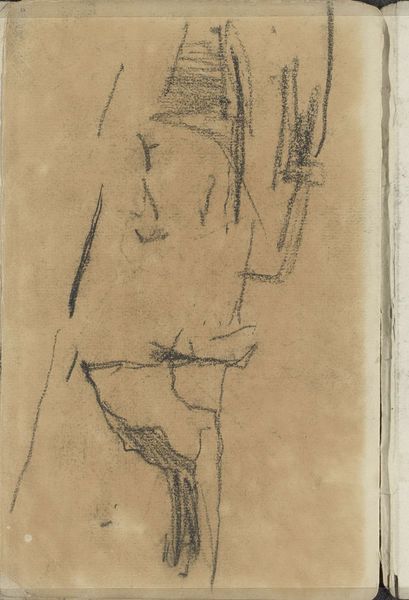
drawing, pencil
#
portrait
#
drawing
#
amateur sketch
#
toned paper
#
light pencil work
#
impressionism
#
pencil sketch
#
incomplete sketchy
#
figuration
#
personal sketchbook
#
detailed observational sketch
#
pen-ink sketch
#
pencil
#
sketchbook drawing
#
sketchbook art
Dimensions: height 120 mm, width 192 mm
Copyright: Rijks Museum: Open Domain
Editor: Here we have George Hendrik Breitner’s "Man in een mantel of cape", a pencil drawing from around 1885, currently held at the Rijksmuseum. There's a stark contrast between the shadowy figure and the negative space—it feels very gestural and immediate, almost like a snapshot. What do you see in this piece that stands out compositionally? Curator: What intrigues me foremost is the deployment of line and mass. Breitner seems less concerned with mimetic representation, and more interested in the interplay of light and shadow defining form. The rapid, almost frantic, pencil strokes construct the figure, while the open spaces—the void—become equally crucial compositional elements. Consider how the hatching technique serves not only to model the cloak but also to generate a sense of dynamism. Editor: I can see how the hatching gives it energy, but what about the off-center placement? Does that choice influence the way we perceive the figure? Curator: Indeed. The figure's placement, askew within the frame, destabilizes the composition, preventing it from settling into static equilibrium. This intentional imbalance invites the viewer's gaze to roam, actively participating in constructing a coherent image from fragmentary marks. Note how the contour line almost dissolves in places, a deliberate choice on the part of the artist, which serves to deny the viewer a singular, definitive reading. It is less about portraiture, more about a study of form through tone and line. Editor: So, it's almost like the sketch itself becomes the subject? I never considered how much could be communicated through the absence of detail. Curator: Precisely. The apparent incompleteness, far from being a deficit, is instead a strategic gesture, forcing us to confront the materiality of the artwork. Breitner is inviting us to witness not just the representation of a man in a cloak but also the very process of artistic creation. Editor: It's amazing how analyzing these formal elements unlocks new understandings of the piece. I appreciate you drawing my attention to the spatial relationships and the importance of the line work in the drawing. Curator: My pleasure. Delving into these structures, as you say, encourages us to view art beyond the representational, uncovering its intrinsic qualities, enriching the visual experience.
Comments
No comments
Be the first to comment and join the conversation on the ultimate creative platform.
